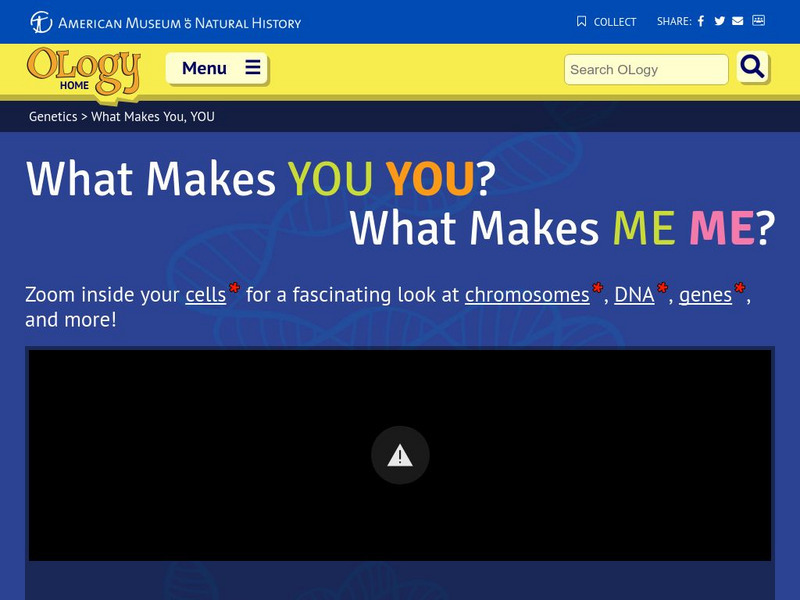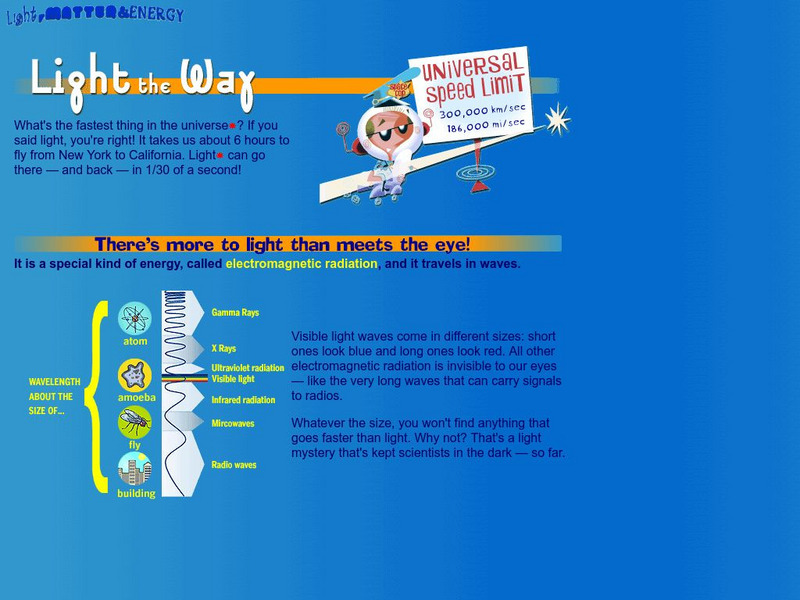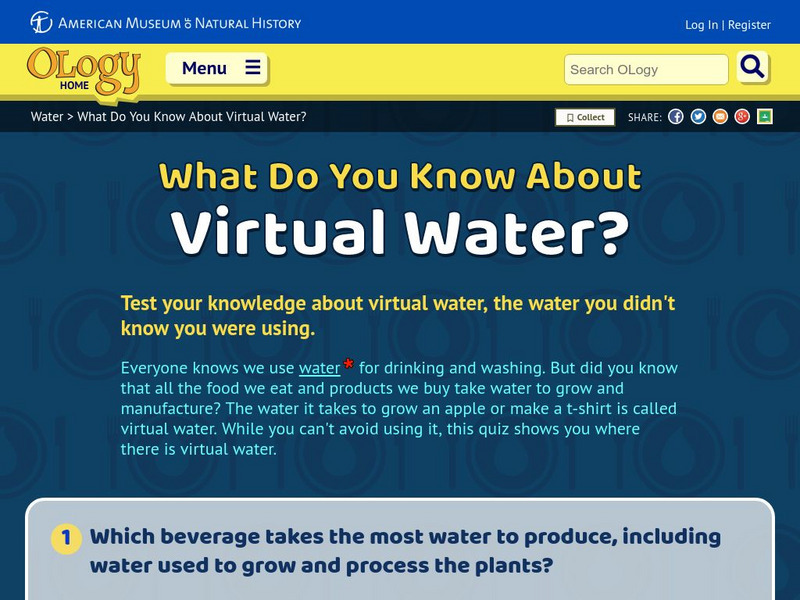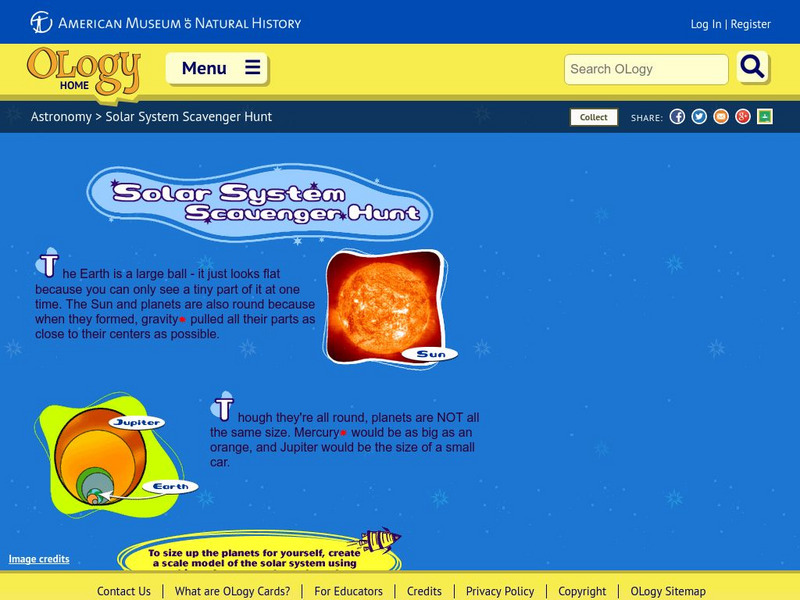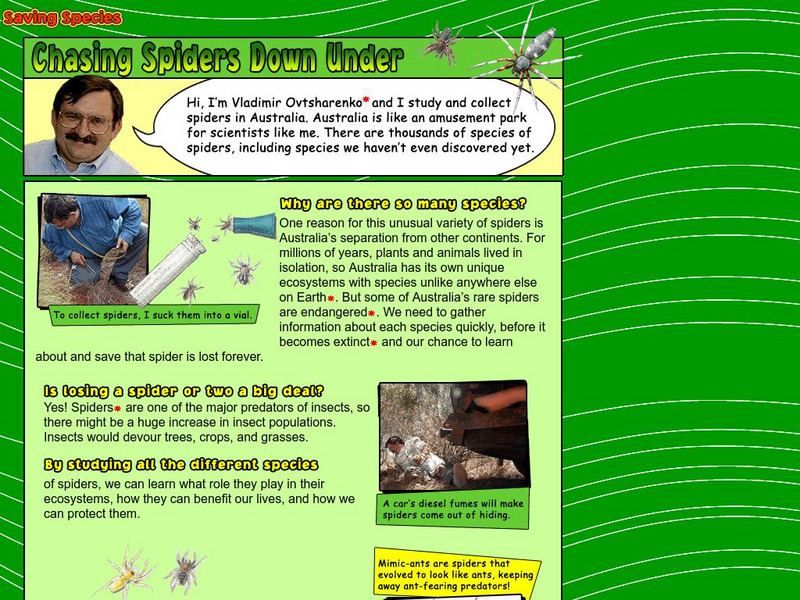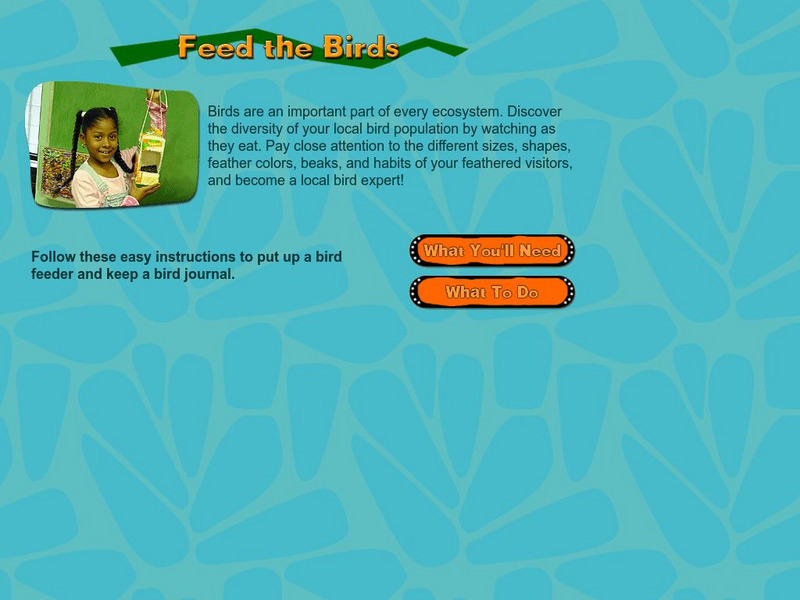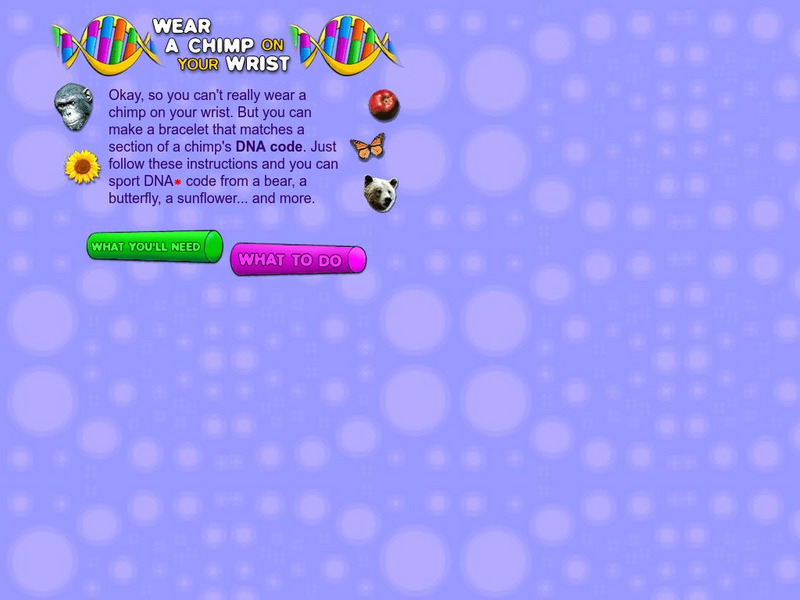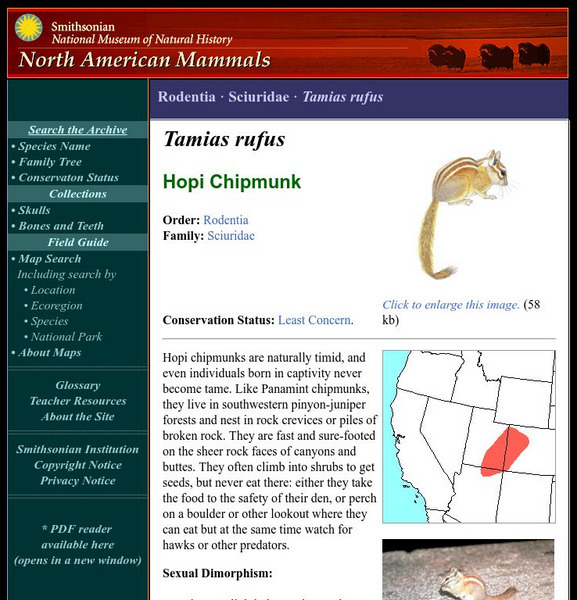American Museum of Natural History
American Museum of Natural History: O Logy: What Makes You You? What Makes Me Me?
Simple animation explains the function of chromosomes, genes, and DNA by letting you zoom into a cell nucleus for a closer look.
American Museum of Natural History
American Museum of Natural History: O Logy: Light, Matter, Energy: Light the Way
What is electromagnetic radiation and how does it work? Review a captioned graphic that explains electromagnetic radiation and the visible and invisible types of radiation on the electromagnetic spectrum.
American Museum of Natural History
American Museum of Natural History: O Logy: You Light Up My Life!
Brief explanation of observations that Arthur Eddington used to test Einstein's general theory of relativity. Click on the starred words to learn more about the topic.
American Museum of Natural History
American Museum of Natural History: O Logy: What Do You Know? Virtual Water
A quiz to test your knowledge of the water it takes to grow and produce the food we eat and the products we buy.
American Museum of Natural History
American Museum of Natural History: O Logy: Magnificent Madagascar
Scientist Christopher Raxworthy, who studies the reptiles of Madagascar, explains the nature of his work.
American Museum of Natural History
American Museum of Natural History: Peru O Logy Card
Turn over this interactive OLogy flash card to learn about Peru, its ancient people and their descendants. Find fast facts, questions and answers, and similar bite-size pieces of information about the country.
American Museum of Natural History
American Museum of Natural History: O Logy: Stuff to Do: Grow Rock Candy
Learn about the crystal patterns and shapes of select minerals (diamond, quartz, muscovite, and topaz) and how to grow your own rock candy crystals.
American Museum of Natural History
American Museum of Natural History: O Logy: Stuff to Do: Scavenger Hunt
Illustrated instructions for creating a scale model of the solar system.
American Museum of Natural History
American Museum of Natural History: O Logy: Chasing Spiders Down Under
Naturalist Vladimir Ovtsharenko explains why Australia is home to so many different species of spiders, why spiders are important, and why spiders should be protected.
American Museum of Natural History
American Museum of Natural History: O Logy: Stuff to Do: Feed the Birds
Instructions for building a bird feeder and for keeping a journal of observations about the birds that come to feed.
American Museum of Natural History
American Museum of Natural History: Ology: Endangered!
After making the gameboard, play this interactive learning game that teaches about "The Endangered Species Act", a law that protects animals and plants that are in danger of going extinct.
American Museum of Natural History
American Museum of Natural History: O Logy: Stuff to Do: Draw a Monarch Butterfly
Learn how to make a scientific illustration of a monarch butterfly in several easy steps.
American Museum of Natural History
American Museum of Natural History: O Logy: What Is the Greenhouse Effect?
An illustrated explanation of the greenhouse effect.
American Museum of Natural History
American Museum of Natural History: O Logy: Bahamas: Creatures of the Reefs
Biologist Paula Mikkelsen, who studies mollusks among the coral reefs in the beautiful waters of the Bahamas, explains her work.
American Museum of Natural History
American Museum of Natural History: O Logy: Stuff to Do: Wear a Chimp
Illustrated instructions for a constructing bracelet from a section of the DNA code for a chimp, a sunflower, a grizzly, the human heart, or any one of six other plants or animals.
American Museum of Natural History
American Museum of Natural History: Meet the Universe's Main Attraction Gravity
Illustrated and animated series of short articles answers the questions, what is gravity? and what does it do?
American Museum of Natural History
American Museum of Natural History: O Logy: The Tree of Life: True Bacteria
Visit the tree of life and discover characteristics, habitats, and examples of the world's true bacteria.
Other
New Mexico Museum of Natural History and Science: Coelophysis
The Coelophysis is New Mexico's official state fossil. It lived in the late Triassic Period and has only been found in New Mexico. Popular questions about this dinosaur are answered here. In addition, there are numerous documents about...
Smithsonian Institution
National Museum of Natural History: Relative Dating in Archaeology [Pdf]
Activities for the classroom that teach about stratigraphy and seriation, two methods used in the relative dating of objects in archaeology.
Smithsonian Institution
National Museum of Natural History: American Mammals: American Mink
The American Mink, with its luxurious brown coat, is now bred on farms, or mink ranches, to provide fur to the clothing industry. This has relieved some of the stress natural populations endured from trapping over the past two centuries....
Smithsonian Institution
National Museum of Natural History: American Mammals: Western Gray Squirrel
Although Western Gray Squirrels are diurnal, they are secretive by nature and stay away from humans as much as possible. However, they are comparatively frequently hit by automobiles, perhaps because they lack experience of human...
Smithsonian Institution
National Museum of Natural History: American Mammals: Preble's Shrew
Very little is known about the natural history of Preble's Shrew, which has been found in widely separate localities in much of the western United States. Specimens have been collected at elevations of 1,280 m in Oregon and 2,750 m in...
Smithsonian Institution
National Museum of Natural History: American Mammals: Hopi Chipmunk
Hopi chipmunks are naturally timid, and even individuals born in captivity never become tame. Like Panamint chipmunks, they live in southwestern pinyon-juniper forests and nest in rock crevices or piles of broken rock. Learn more about...
Smithsonian Institution
National Museum of Natural History: American Mammals: Townsend's Pocket Gopher
Townsend's Pocket Gophers require deep, moist soils of river valleys and ancient lake beds. Other pocket gophers that are found in the same region, in the northern Great Basin, prefer different soil types: Botta's Pocket Gopher is...
